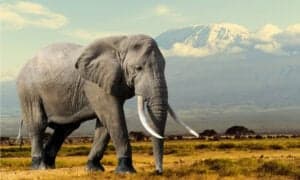The Asian elephant (Elephas maximus) is the only extant member of the genus Elephas. Its distribution spans from western India to eastern Borneo in Southeast Asia. A total of three recognized subspecies exist: the indicus, found across mainland Asia, the sumatranus, found only on the island of Sumatra, and the maximus, found only in Sri Lanka. Historically, the Syrian elephant (Elephas maximus asurus) was the farthest western population of Asian elephants (Elephas maximus). More interesting details are provided below. Learn ten fascinating things about the Asian elephant. Read on for 10 incredible Asian Elephant facts!

1. They are One of Only Three Species of Elephant
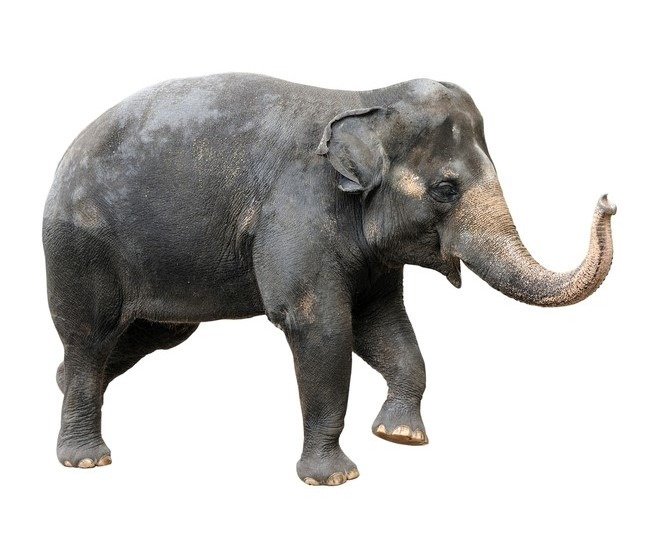
Elephants in the African savanna are larger than those in the African forest, which was split off as a separate species in 2000.
©tristan tan/Shutterstock.com
There are three types of elephants, the African forest elephant, the Asian elephant, and the African savanna (or bush) elephant. Elephants in the African savanna are larger than those in the African forest, which was split off as a separate species in 2000.
2. The Asian Elephant is an Important Cultural and Religious Icon

Asian elephants often represent peace and spiritual enlightenment.
©SOMMAI/Shutterstock.com
Once feared as lethal weapons, Asian elephants are now revered as symbols of peace and spirituality. In the distant past, several ancient armies rode elephants across Asia. Unfortunately, these elephants were not always an asset. In India, the elephant is considered a sacred creature. Many Hindus believe that the god Lord Ganesha may help them overcome obstacles and bring them good fortune.
3. You Can Tell Asian Elephants Apart by Their Ears
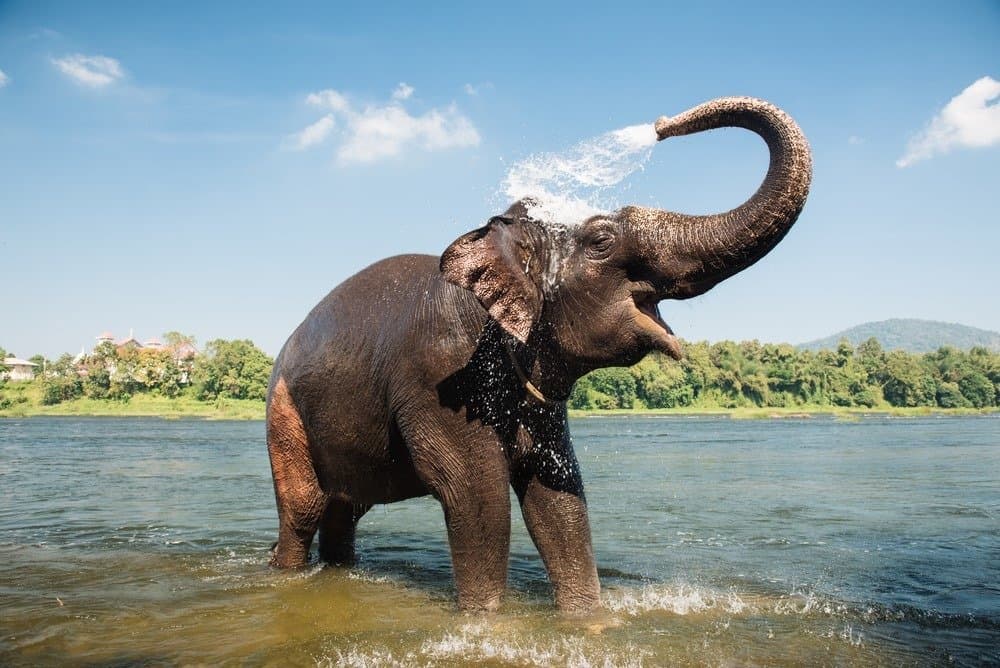
Asian elephants have large ears and long trunks.
©Dmytro Gilitukha/Shutterstock.com
African elephants’ ears are far bigger than those of their ancestors and are said to take on the shape of Africa. Asian elephants’ ears are fashioned like the Indian subcontinent. The trunks of African and Asian elephants differ in several ways, including the number and position of the “fingers” at the ends of the two species’ trunks.
4. Their Trunks are Amazing and Very Important in Their Daily Life

The trunk of an Asian elephant is their most sensitive and vital organ
©Mogens Trolle/Shutterstock.com
About 150,000 individual muscle cells make up an elephant’s trunk. The trunks of Asian elephants are so sensitive that researchers believe they might be the most sensitive organ yet discovered in an animal.
Elephants ingest water through their trunks, up to 8 liters, and they wear their trunks like a snorkel and use them in the water. Asian elephants, in contrast to their African counterparts, have two toenails on each foot.
5. Their Tusk are Actually Their Teeth

Despite their visual appeal, elephants are regularly in danger due to their tusks.
©Adrian Pingstone / Public Domain, from Wikimedia Commons, the free media repository – License
Tusks first appear in elephants at age two and are simply enlarged incisors. The growth of a tusk takes the entirety of a mammoth’s life. Tusks have many uses, such as a weapon in combat and a tool for foraging for food (by stripping bark or digging up roots, respectively). Despite their visual appeal, elephants are regularly in danger due to their tusks. The components are crafted from ivory, a rare and valuable material.
6. Elephants Eat Constantly
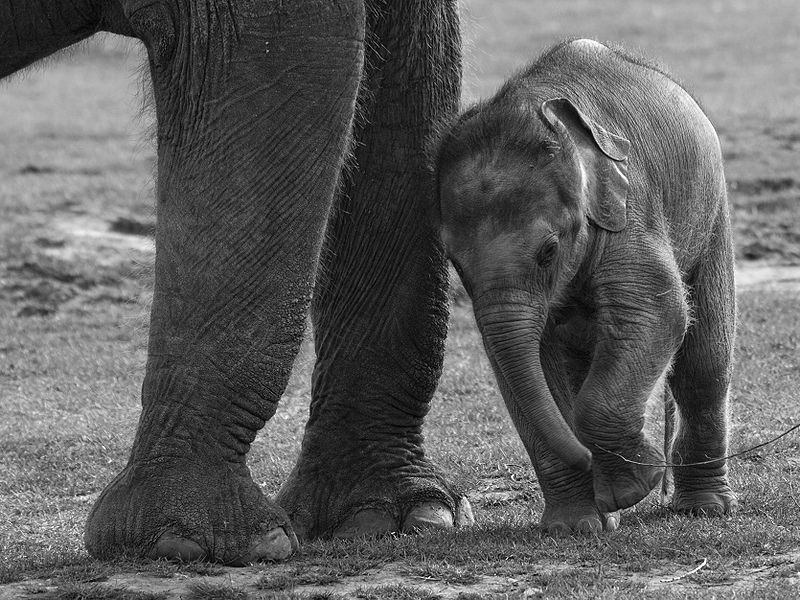
Because they eat so much, elephants may only be active for about 3/4 of the day.
©William Warby, CC BY 2.0, via Wikimedia Commons – License
Elephants‘ diets range from grasses and leaves to shrubs and fruits to roots, depending on the time of year and where they live. When conditions are particularly dry, elephants increase their consumption of woody plant parts, including twigs, branches, and bark.
They must eat up to 150 kg of food daily (equivalent to about 375 canned goods). However, as much as half of this may pass through their systems untouched. Because they eat so much, elephants may only be active for about 3/4 of the day.
7. They Drink a Lot of Water
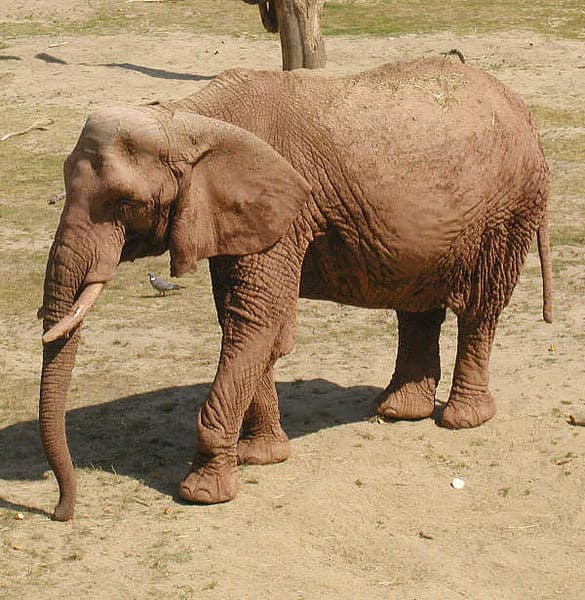
Asain elephants require 200 liters of water per day.
©Arpingstone, Public domain, via Wikimedia Commons – License
Elephants have a daily drinking requirement; thus, you can typically find them near a freshwater supply. Because of their long history with humans, elephants have become important icons in many Asian cultures. It takes at least two or three days of drinking water for an elephant, which may drink around 200 liters per day, to prevent the animal from dehydrating critically.
8. Asian Elephants Have Thick Protective Skin
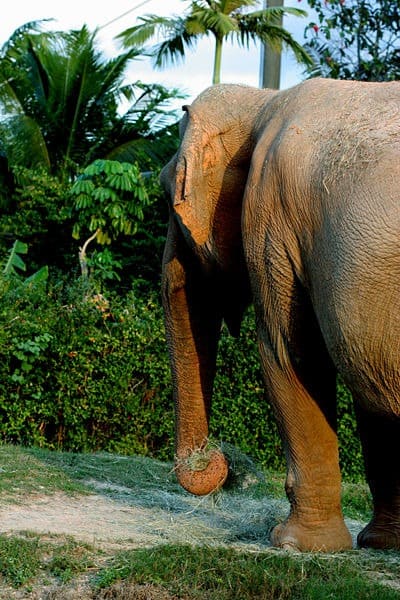
The folds and wrinkles in their skin may store as much as 10 times as much water as smooth skin, helping to keep them cool.
©Kseajayne, CC BY 3.0, via Wikimedia Commons – License
Elephants have skin that is typically 2.5 cm thick. The folds and wrinkles in their skin may store as much as 10 times as much water as smooth skin, helping to keep them cool. They take frequent mud and dust baths to protect their skin from the sun.
9. Baby Elephants are Standing Rather Soon after Birth

After two days, they’ll be capable of keeping up with the herd.
©SuperJew, CC BY-SA 3.0, via Wikimedia Commons – License
It takes newborn elephants only 20 minutes to stand up after birth, and they can take their first steps an hour later. After two days, they’ll be capable of keeping up with the herd. This remarkable survival strategy allows elephant herds to keep moving in search of water and food.
10. Asian Elephants are the Largest Mammal of Their Respective Continent
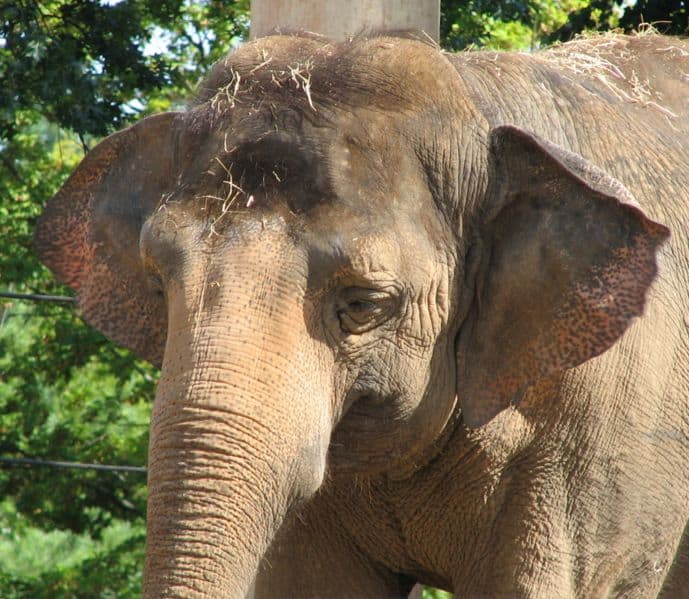
Asian elephants weigh up to 12,000 pounds!
©Ltshears – Trisha M Shears, Public domain, via Wikimedia Commons – License
Adult Asian elephants weigh between 6,000 to 12,000 pounds, making them smaller than their African counterparts. The average height for males of this species is 6-12 feet at the shoulder, and males tend to be stockier than females.
The photo featured at the top of this post is © iStock.com/goodze
Thank you for reading! Have some feedback for us? Contact the AZ Animals editorial team.





